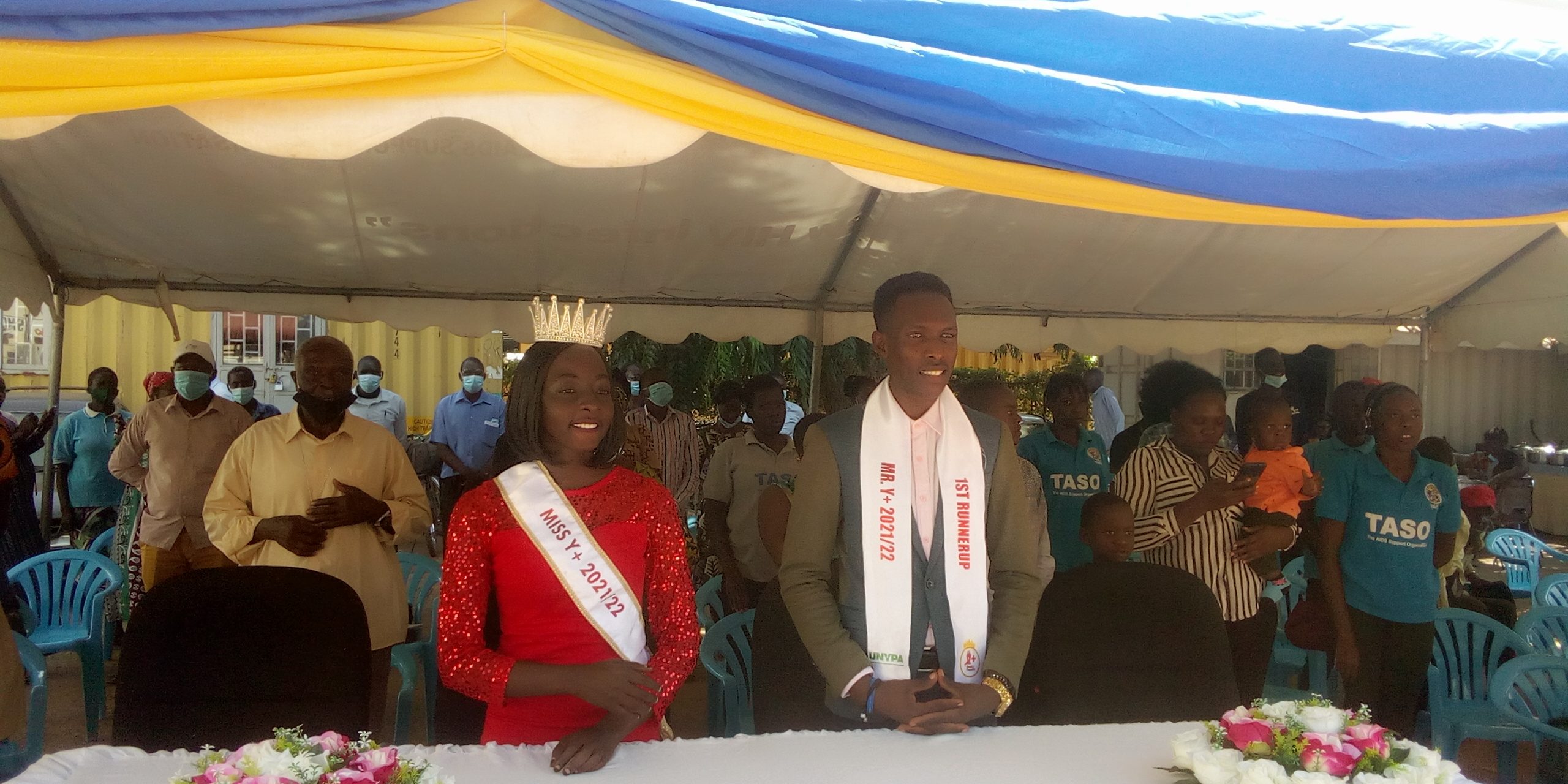By Steven Enatu
The lack of adherence to HIV drugs by young people due to stigma from the community may affect Uganda’s ability to attain the UNAIDS targets to achieve the next set of goals to end AIDS by 2030.
TheUNAIDS targets 95-95-95 for treatment: 95% of people living with HIV knowing their HIV status; 95% of people who know their status on treatment; and 95% of people on treatment with suppressed viral loads to end AIDS by 2030:
Dr. Ronald Opito the center programs manager at TASO Soroti Region project during the home welcome of the reigning Miss Youth Positive Uganda 2021- 2022 said that many young people are still facing stigma in accessing HIV/AIDS related treatment noting that some children when growing up positive will adhere to their treatment but as they mature they get curious and ask questions on why they are swallowing drugs and others do not.
Rubunah Naiga the Miss Y+ Uganda 2021 said she is going to embark on sensitisation of communities on drug adherence. The Mr and Mrs Y+ beauty contest for young people living with HIV doesn’t focus on looks, but on being a role model for other young people with HIV and being able to advocate for the needs of young people, and to increase acceptance and understanding of young people living with HIV in society.
“Most people do not have the information, they do not know that there are preventative measures suck as the use of PrEP and as a peer leader this is something I need to interest myself on to ensure that most young people get to know about this and they go out seeking for these services” she said.
She said that some mothers especially in the rural setting still do not know that they can swallow their anti HIV drugs effectively and suppress the viral load and give birth to children free from HIV/AIDS.
Antiretroviral therapy (ART HIV medicine reduces the amount of HIV in the body (viral load) to a very low level, which keeps the immune system working and prevents illness and possible new infections. This is called viral suppression.
Opito tasked parents, Peer leaders and all stakeholders to keep on sensitizing the young adolescents on sexual reproductive health issues. He asked the reigning Young positive (Y+) to use her position to advocate for the young people’s agenda in the fight to end HIV/AIDS.
“For those who are already positive, they should protect themselves from STI’s and unwanted pregnancies and those girls who are still negative, we should tell them that HIV/AIDS is real and it’s affecting more young girls than boys. As young as 15 years you find that someone is positive and this is due to some petty things which unfortunately sometimes our parents tend to ignore for example a girl may need pads and the parents fail to provide here some boa boda will offering exchange for sex” he said.
Ilaborot Emmanuel Otim the first runner- up reigning Mr. Young positive (Y+) Uganda said that as a peer leader for the young, his interest will be in ensuring that the agenda of young people is put first in measures aimed at preventing HIV/AIDS new infections.
He said the position at which they serve is about being a role model for other young people with HIV, on being able to advocate for their needs and to increase acceptance and understanding of young people living with HIV in society. The Human Immunodeficiency Virus (HIV), continues to be a major global public health and development challenge and has claimed more than 35 million lives since its discovery in early 1980’s.
There were approximately 37.9 million people living with HIV at the end of 2018 with 1.7 million people becoming newly infected in 2018 globally according to pan African-med-journal research of 2020. It is estimated that more than half of new HIV infections worldwide occur among young people of 15-24 years and up to a third of people living with HIV/AIDS are 25 years or younger.
The Uganda population-based HIV impact assessment indicated that HIV prevalence is nearly three times higher in young Ugandans aged 20-24 compared to those aged 15-19. HIV prevalence is almost three times higher among females than males aged 15 to 24.
By Steven Enatu



